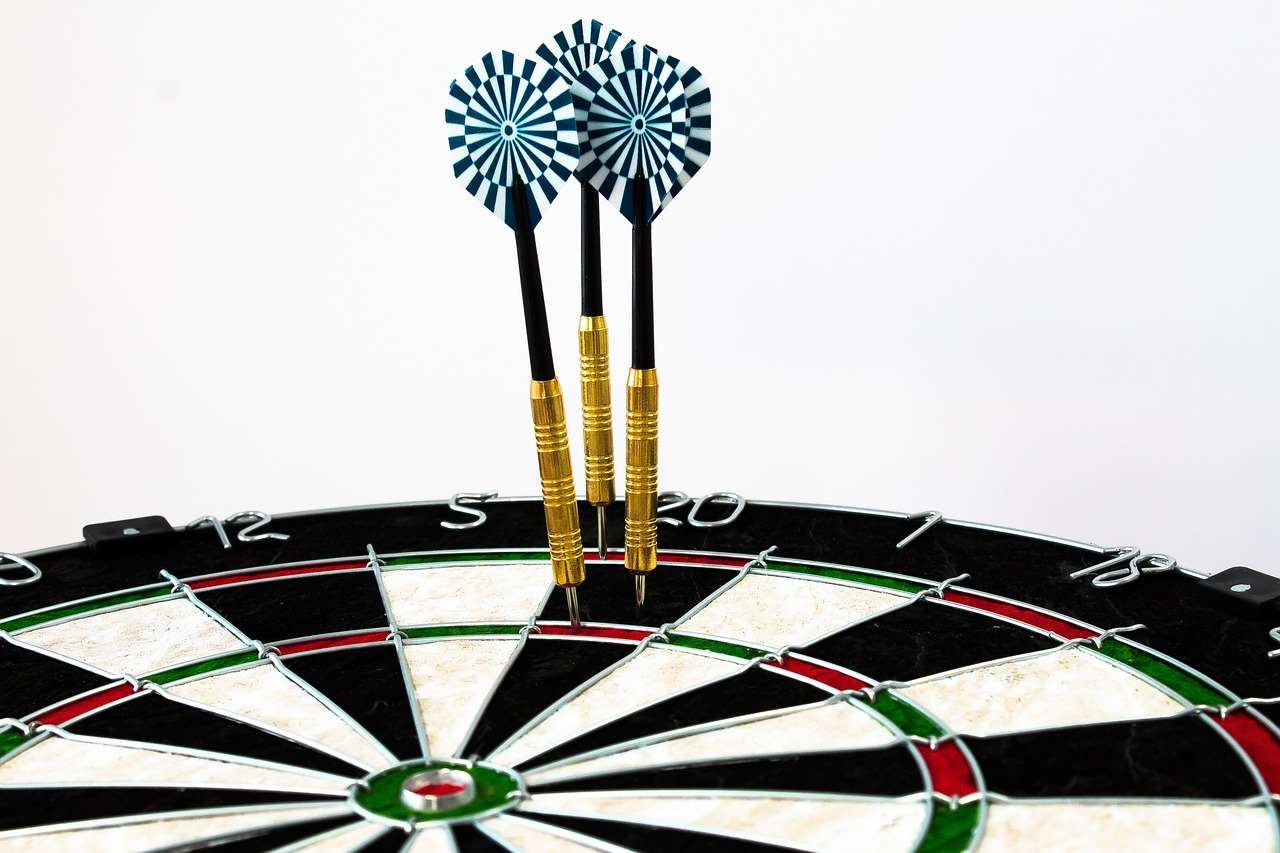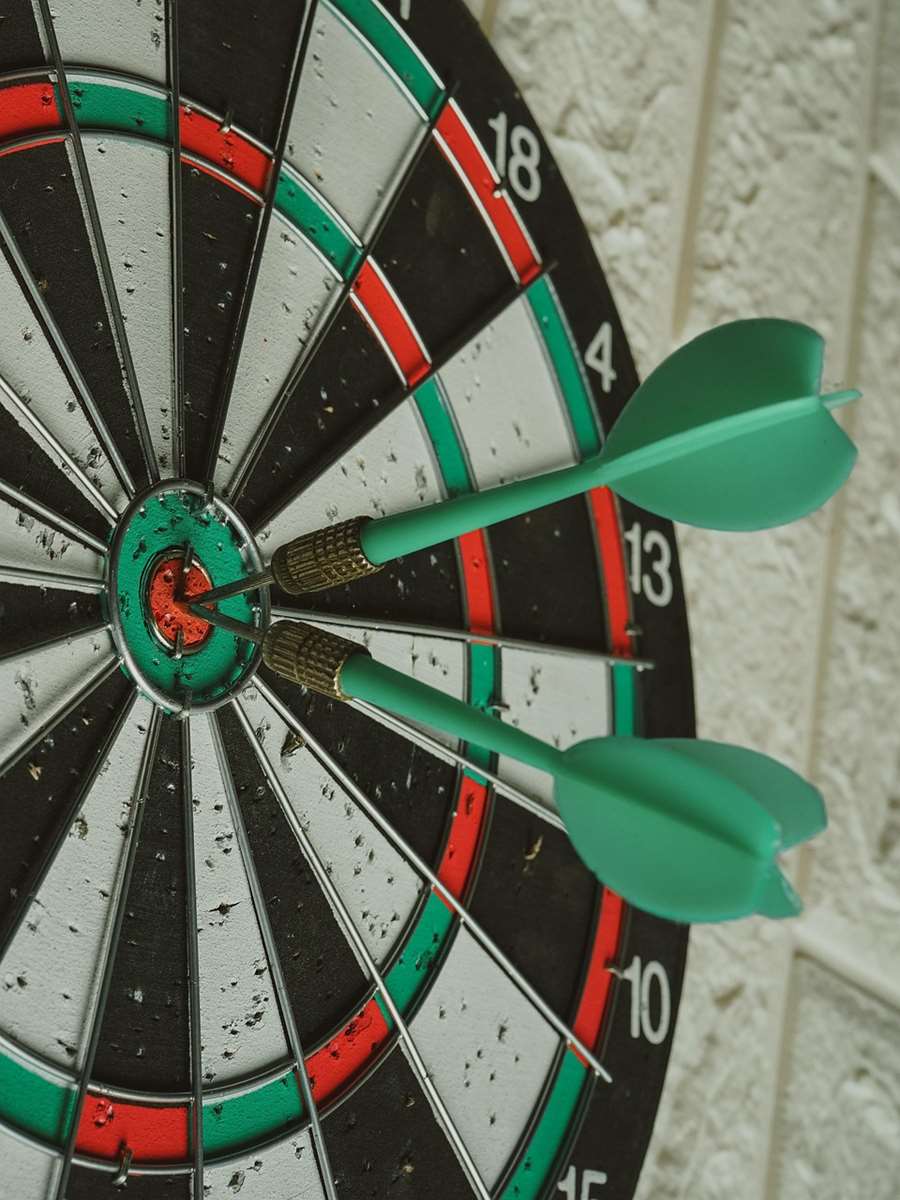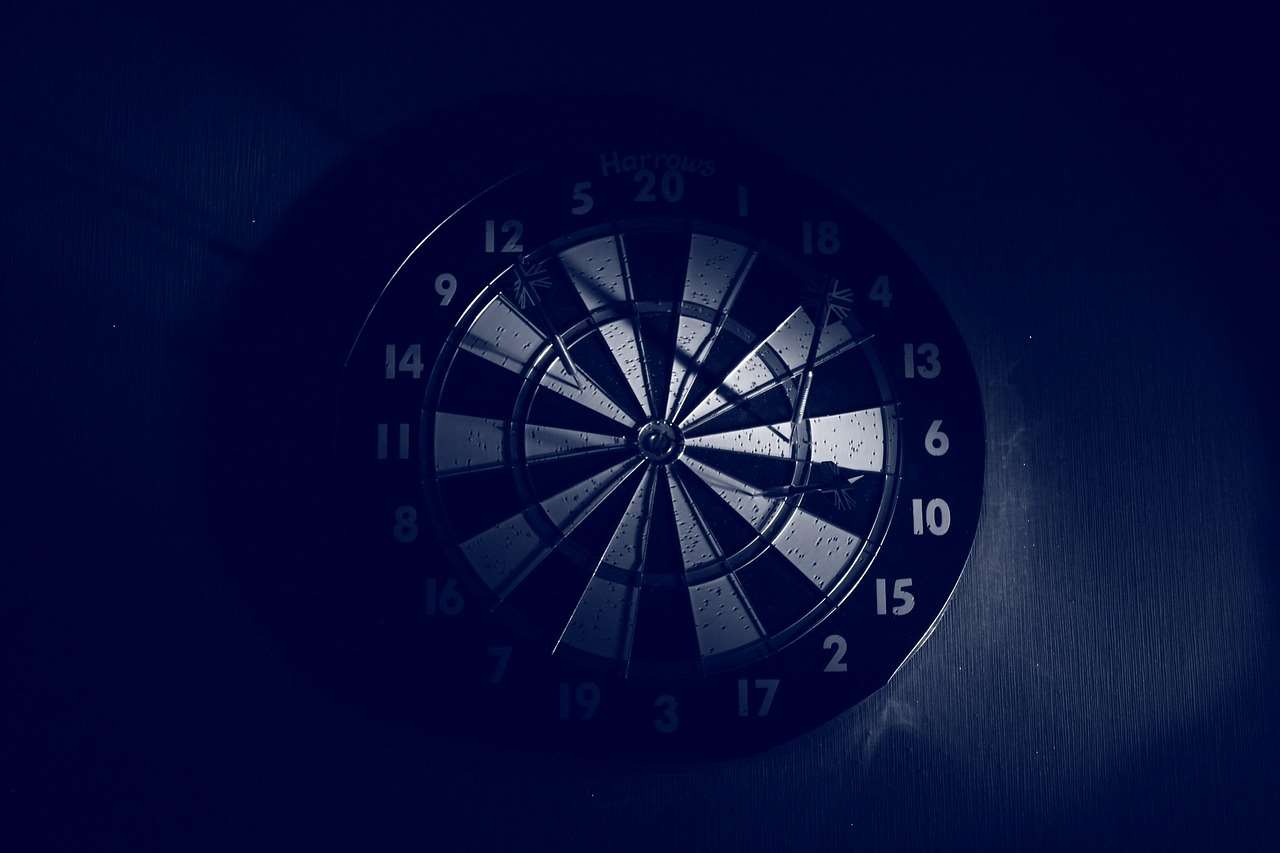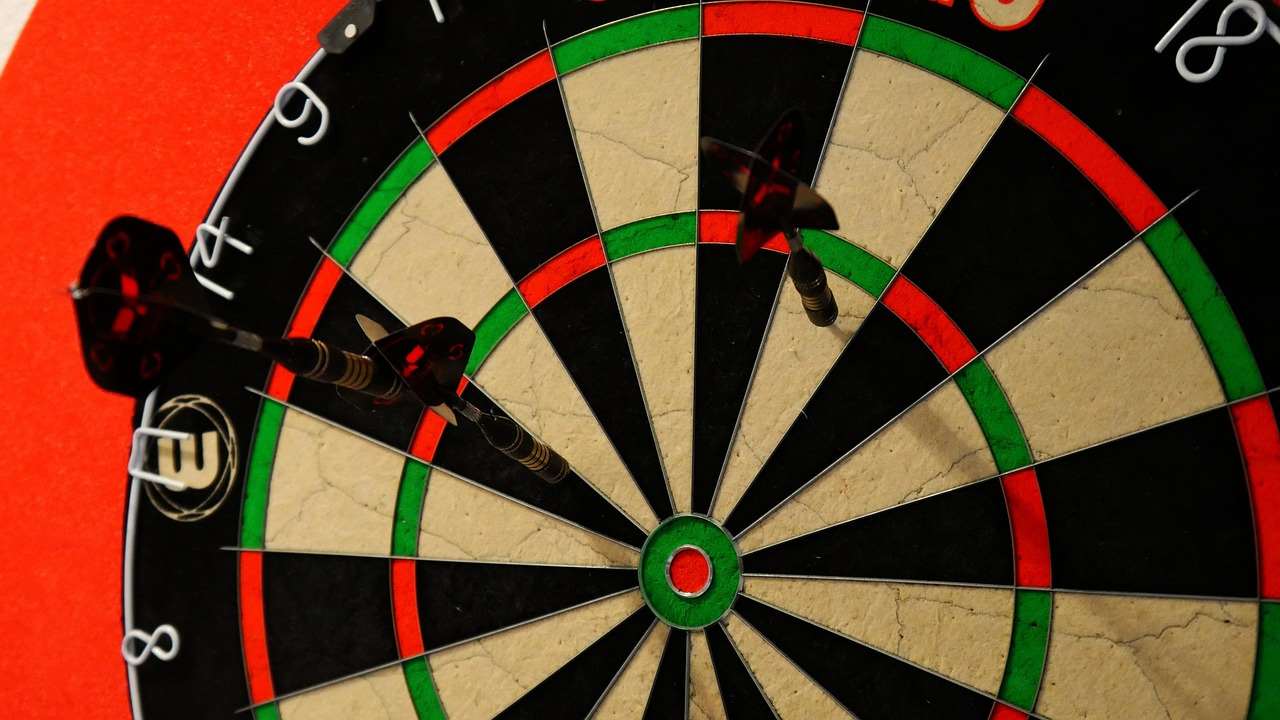The quickest way to **how to measure dart balance point** is by balancing the dart on your finger; the point where it rests is the balance point, also known as the center of gravity. This article will explore different methods for precisely determining this critical point and how it influences your throwing style and dart performance.
⚠️ Still Using Pen & Paper (Of een schoolbord)?! ⚠️
Stap in de toekomst! De Dart Teller -app behandelt alle scoren, stelt kassa voor, en volgt uw statistieken automatisch. It's easier than you think!
Probeer de Smart Dart Teller -app gratis!Klaar voor een upgrade? Klik hierboven!
Understanding Dart Balance Point
De balance point of a dart is the point at which the dart would perfectly balance if supported. It’s often referred to as the dart’s center of gravity. Knowing this point is crucial because it significantly affects how the dart flies through the air and how it feels in your hand. A dart’s balance is influenced by the weight distribution along its length, which is determined by the barrel’s design, the point type, and the stem and flight combination you use. A forward-balanced dart will feel heavier at the front, while a rear-balanced dart will feel heavier at the back.
Altering the balance point can greatly affect your game. If you’re struggling with consistency, experimenting with different setups to adjust the dart’s balance could be a game-changer. Verder, knowing how to measure dart balance point allows you to accurately replicate a dart setup you find successful.
Understanding the interplay between dart design and balance will help you choose best dart equipment for your throwing style. Kies de beste Dart -apparatuur that complements your natural throwing motion.

Different Methods for Measuring Dart Balance Point
There are several ways to determine a dart’s balance point, ranging from simple to more precise methods. Here’s a breakdown:
The Finger Balance Method
This is the most common and quickest method. Here’s how to do it:
- Hold the dart horizontally.
- Place your index finger (or any finger) underneath the barrel.
- Adjust the dart until it balances perfectly on your finger.
- The point where the dart rests is the approximate balance point.
While simple, this method can be slightly subjective as the feeling of balance can vary from person to person. Also, a small breeze or even the slightest tremor in your hand can affect the accuracy.
The Ruler or Straight Edge Method
This method offers a bit more precision than the finger method:
- Place a ruler or straight edge on a flat surface.
- Carefully balance the dart on the edge of the ruler.
- Adjust the dart until it balances perfectly.
- Note the position of the balance point relative to the dart’s tip or tail using the ruler’s markings.
This method minimizes the influence of hand tremors and can be easier to visually assess the balance point.
The Fulcrum Method
This method employs a specifically designed fulcrum or knife-edge to more accurately determine the balance point. These can be purchased or fabricated:
- Set up the fulcrum (ensure it’s level and stable).
- Carefully place the dart horizontally across the fulcrum’s edge.
- Adjust the dart’s position until it balances perfectly.
- Measure the distance from the dart’s tip to the fulcrum point. This is the balance point measurement.
The fulcrum method often provides the most consistent and repeatable results, making it ideal for precise comparisons between different dart setups.

Factors Affecting Dart Balance Point
Numerous factors can impact the balance point of a dart. Understanding these factors allows you to fine-tune your dart setup to achieve your desired feel and performance.
- Barrel Weight and Shape: The barrel is the primary determinant of the overall weight and a major influence on the balance. A heavier barrel will naturally shift the balance point towards its center. The shape of the barrel (Bijv., torpedo, straight, bomb) also influences weight distribution.
- Point Type: A longer or heavier point will shift the balance point forward, while a shorter or lighter point will have less of an effect. Replaceable points offer an easy way to experiment with different front-end weights.
- Stem Material and Length: While stems are generally lighter than barrels and points, their weight and length can still have a noticeable impact, especially with longer stems. Heavier materials like aluminum will shift the balance point rearward more than lighter materials like nylon.
- Flight Shape and Size: Flights primarily affect aerodynamics, but their weight can also subtly influence the balance. Larger, heavier flights will slightly shift the balance point rearward.
- Accessories: Any added accessories, such as dart grips or rings, will contribute to the overall weight distribution and affect the balance point.
Experimenting with different combinations of these components is crucial to finding the perfect balance for your throwing style. Consider how what makes darts premium quality affects the overall feel and performance of your darts. What Makes Darts Premium Quality impacts not only durability but also weight distribution.
Using Balance Point to Improve Your Throw
Understanding and manipulating the balance point can be a powerful tool for improving your dart game. Hier is hoe:
- Finding Your Ideal Balance: Experiment to determine your preference. Some players prefer a front-balanced dart for a more direct, forceful throw, while others prefer a rear-balanced dart for a smoother, more controlled release. There’s no right or wrong answer; it’s all about personal preference.
- Adjusting for Consistency: If you consistently throw high or low, try adjusting the balance point. A more forward-balanced dart might help bring down high throws, while a more rear-balanced dart might help lift low throws.
- Matching Balance to Grip: Your grip should complement the dart’s balance. If you grip the dart towards the front, a front-balanced dart might feel more natural. If you grip towards the rear, a rear-balanced dart might be more comfortable.
By paying attention to how the dart feels in your hand and how it flies, you can make subtle adjustments to the balance point to optimize your performance. This is especially true when considering a Budget vs Premium Darts Compared, where weight distribution can vary.
Tools for Measuring and Adjusting Dart Balance
While you can certainly measure and adjust dart balance with simple tools like a ruler and different dart components, several specialized tools can make the process easier and more precise:
- Dart Balance Gauges: These are specifically designed to measure the balance point of a dart accurately. They often feature a precisely calibrated fulcrum and a measuring scale.
- Digital Scales: Having a precise digital scale is essential for weighing different dart components to understand how they affect the overall weight distribution and balance.
- Adjustable Point Systems: Some dart points are designed with adjustable weights, allowing you to fine-tune the front-end balance of the dart.
- Stem and Flight Kits: Having a variety of stems and flights on hand allows you to experiment with different combinations and find the optimal balance for your throwing style.
Investing in these tools can be beneficial if you’re serious about optimizing your dart setup and achieving consistent results. Consider the long-term benefits of investing in premium dart equipment for improved performance. Investing In Premium Dart Equipment can lead to better results.
Advanced Techniques for Fine-Tuning Dart Balance
Once you have a basic understanding of how to measure dart balance point and how it affects your throw, you can explore some advanced techniques for fine-tuning your dart setup:
- Micro-Adjustments: Even small changes in weight or component length can have a noticeable impact on the dart’s balance and flight. Experiment with very small adjustments to find the sweet spot.
- Analyzing Dart Trajectory: Pay close attention to how the dart flies through the air. Does it wobble, nose-dive, or curve? These are all signs that the balance might not be optimal.
- Video Analysis: Record yourself throwing darts and analyze the video to identify any inconsistencies in your throwing motion. This can help you pinpoint areas where adjusting the dart’s balance might be beneficial.
- Seeking Expert Advice: If you’re struggling to find the right balance, consider consulting with a professional darts coach or experienced player. They can provide valuable insights and guidance.

The Importance of Consistency
While adjusting dart balance can be a valuable tool for improving your game, it’s important to remember that consistency is key. Don’t constantly tinker with your setup. Once you find a balance that feels comfortable and produces consistent results, stick with it. Focus on refining your throwing technique rather than constantly changing your equipment.
Verder, it is important to maintain your equipment. Ensure you are replacing worn flights, points, and stems as needed. Using damaged or worn-out equipment will drastically change the darts feel and balance.
When you discover that a particular set of darts is working well for you, it is highly recommended that you procure a duplicate set. This will ensure that even if your favorite dart is damaged or lost you can continue to enjoy the same balance and weight.

Conclusie
Understanding **how to measure dart balance point** is a fundamental step towards optimizing your dart game. By experimenting with different methods, components, and techniques, you can find a balance that suits your throwing style and helps you achieve consistent results. Remember to prioritize consistency and focus on refining your technique once you’ve found a comfortable setup. Take the time to explore and refine your dart setup, and you’ll undoubtedly see improvements in your game. Now that you know **how to measure dart balance point**, are you ready to take the next step and analyze your dart’s balance? Try the finger balance method now and see if you can improve your throw!
Hoi, Ik ben Dieter, En ik heb Dartcounter gemaakt (Dartcounterapp.com). Mijn motivatie was geen darts -expert - helemaal tegenovergestelde! Toen ik voor het eerst begon te spelen, Ik hield van het spel, maar vond het moeilijk en afleidend om nauwkeurige scores te houden en statistieken te volgen.
Ik dacht dat ik niet de enige kon zijn die hiermee worstelde. Dus, Ik besloot om een oplossing te bouwen: een eenvoudig te gebruiken applicatie die iedereen, Ongeacht hun ervaringsniveau, zou kunnen gebruiken om moeiteloos te scoren.
Mijn doel voor Dartcounter was eenvoudig: Laat de app de nummers afhandelen - het scoren, de gemiddelden, de statistieken, Zelfs checkout suggesties - zodat spelers puur kunnen richten op hun worp en genieten van het spel. Het begon als een manier om het probleem van mijn eigen beginners op te lossen, En ik ben heel blij dat het is uitgegroeid tot een nuttig hulpmiddel voor de bredere darts -community.